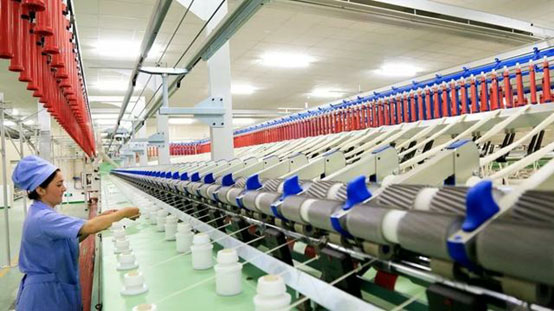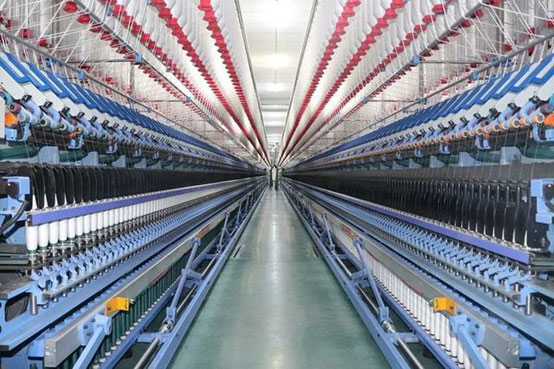FW
The European Union, China and 14 other World Trade Organization members have agreed on a temporary mechanism to resolve trade disputes after US action rendered the WTO incapable of acting as the arbiter of global trade. Washington froze the WTO’s Appellate Body, which acts as a supreme court for international trade, by blocking appointments for over two years. Two of the body’s remaining three members came to the end of their terms in December, leaving it unable to issue rulings.
A WTO panel of trade experts will still make initial findings. However, it is no longer possible to appeal against a ruling at the Geneva-based body. Under the temporary fix, a pool of 10 arbitrators will be set up in the next three months. Three of them will hear any given appeal.
The European Commission said the WTO members involved had agreed to preserve the WTO’s two-step dispute system until the WTO’s own Appellate Body became operational again. The EU had previously teamed up with Norway and Canada to form a separate appeals body that could resolve disputes. The other countries that signed include Australia, Brazil, Chile, China, Colombia, Costa Rica, Guatemala, Hong Kong, Mexico, New Zealand, Singapore, Switzerland and Uruguay.
According to the market estimates, just five retailers contribute to over US$40 of business orders at stake and have claimed to have cancelled the same. These retailers are H&M (US$11.6 bn), Walmart (US$9.5 bn), Costco (US$9.4 bn), Inditex (US$6.8 bn) and Target (US$2.6 bn).
However, according the fresh reports H&M has assured its garment suppliers of taking shipment of goods that have already been manufactured. The brand will also pay for these goods under agreed payment terms. In addition, it will not negotiate prices on already placed orders.
Considering the kind of business at stake from brands and retailers across the world, apparel industry will have devastating impact on the entire supply chain of fabrics, and raw material textile industry.
Fashion and apparel being a seasonal business coming out of lot of variants in terms of sizes, colours and fits cannot generally be liquidated, being made specifically for specific regions, markets and brands.
Xinjiang is China’s largest far-west region, where long staple cotton is most famous and region is witnessing very fast investment growth in spinning industry. On March 25, the Industrial Park Working Committee of China National Textile and Apparel Council organized an online podcast meeting to discuss the current industry situation in the region, arising because of coronavirus impact.
Mr. Xieqing, Deputy Director of Industry and Information Technology Department of Xinjiang Uygur Autonomous Region and Mr. Yang Xiaodong, Deputy Director of Economy and Technology Development Zone of Korla City, Xinjiang from public sector and some companies from private sector were at the podcast.

Mr. Wang Xiaobo, Executive Vice President of Korla Fiber Company of Xijniang Zhongtai Textile Group stated that its fiber company produced 91,300 tons of viscose fiber and 51,400 tons of spun yarn with sales income for 458 million Yuan at production/sale ratio at 75.5% from January to February. Most of its clients, weavers, knitters, and garment manufacturers, are located far away in east and south of the country, where in those east and south regions, productions have not bounced back yet to their regular level after the outbreak of COVID-19. Since, the company is getting a high level of inventory piling up for its viscose fiber and yarns, led to its decision to scale down its production to balance the mounting inventory. As a consequence, because of less output, the cost of production/ton is increasing. If the sales continue to further slide down, the company will be under pressure not only for increasing production costs, but also will have problems in paying back bank loans, making business more difficult.

The similar situation is faced by many businesses in this industrial park. According to Mr. Liu Qin, Chief of Economic Development Division of Economy and Technology Development Park in Korla City, the first two months of this year witnessed a slowdown in industrial output value and yarn production with the big companies in the industrial park, like Zhongtai Textile and Litai Silk Road, business freefalling by 30% and 60% respectively, because of the global pandemic.
The companies in the park mostly produce fiber and yarns that are raw materials for the downstream production, where as fabric and apparel manufacturers are largely in the other provinces that were hit hard by the coronavirus infections. It will take some time before full recovery of production out there, so business orders from those clients are not projected to match up immediately. Because of the drop in orders and business and piling up inventory, price of fibers and yarns are dropping significantly, causing huge financial troubles, resulting in crippling of the businesses.
Mr. Yang Xiaodong, Deputy Director of Economic and Technological Development Zone in Korla city, introduced to the podcast attendees that , though the industrial park also has few downstream manufacturers who are also in the similar predicament because the business orders from international clients are quite a problem when foreign trade is impacted most.
Mr. Su Jianjun, Honorary Chairman of Shandong Dezhou Hengfeng Group, said its Group invested in a modern spinning mill with 1 million spindles in Caohu Industrial Park in Korla City, 85 percent of the capacity has already started with workers coming back to the mill on March 16, and the production/sale rate is 100% as of now, because its clients already had made a full payment for the yarns prior to the Spring Festival. But the new orders are not just as promising, for the reason clients are in wait and watch mood, to take advantage of possible drop in prices of cotton. What’s in store, remains to be seen, how much market changes with coronavirus fading away.

The podcast was successful to link China’s sparsely-populated Far-West to the commercially-prosperous provinces where they have common business interests, even though the new orders from some clients are kept in suspension for more favorable situation to come.
The Industrial Park Working Committee of CNTAC is now facilitating supply-demand matchmaking between different manufacturing clusters and parks at the national level to boost business with confidence in walking onto the land of hope out of mire.
Contributed by Mr. ZHAO Hong
He is working for CHINA TEXTILE magazine as Editor-in-Chief in addition to being involved in a plethora of activities for the textile industry. He has worked for the Engineering Institute of Ministry of Textile Industry, and for China National Textile Council and continues to serve the industry in the capacity of Deputy Director of China Textile International Exchange Centre, V. President of China Knitting Industry Association, V. President of China Textile Magazine and its Editor-in-Chief for the English Version, Deputy Director of News Centre of China National Textile and Apparel Council (CNTAC), Deputy Director of International Trade Office, CNTAC, Deputy Director of China Textile Economic Research Centre. He was also elected once ACT Chair of Private Sector Consulting Committee of International Textile and Clothing Bureau (ITCB)
Denim Expert is offering its world class facility for the production of protective face masks and Personal Protective Equipment (PPE) on a non-profit basis to help tackle the COVID-19 global pandemic.
The company is offering the capacity, skills and production expertise of its factory and wants to develop partnerships to meet much-needed short-term demand for masks and PPE in the battle against COVID-19.
Those willing to partner and wishing to utilise this production capacity would only be asked to provide fabrics and raw materials as well as meeting workers’ wages. Many hospitals in Europe and USA are already running short of masks and PPE as they creak under the strain of the pandemic.
At present, COVID-19 is most prevalent in Europe, where demand for surgical masks and other protective garments has sky-rocketed this past two months. However, other countries – including Bangladesh – are several weeks behind Europe but are expected to follow the same pattern in terms of cases and deaths.
Euratex is identifying options to increase the availability of protective masks in the EU, both by enhancing the existing capacity and creating new manufacturing capacity, including support to textile value-chain companies reconverting their production Under normal circumstances two main type of face protecting masks are put on the market:
In the present circumstances, masks offering a general protection are used as well. These masks offer different degrees of protection, depending on which materials are used and how they are made. These are usually intended for use by the population and are not meant to be used by healthcare workers. Public authorities should communicate clearly on the difference between these masks, and their level of protection.
Euratex is working with its membership and the European Commission to quickly identify solutions that are workable and increase the relative safety of European citizens.
Vietnamese exporters anticipate new orders from Europe after the EU-Vietnam Free Trade Agreement (EVFTA) takes effect and the COVID-19 pandemic is stamped out.
The EVFTA is expected to become effective in July this year if the Vietnamese National Assembly ratifies it in the May session. At that time, bilateral trade is likely to enjoy improvement.
Trade between Vietnam and the EU usually declines in the first three months of a year as there are many holidays during the period.
This year, a number of firms have also limited exports and imports in the three months to wait for preferential tariffs under the EVFTA, which was ratified by the European Parliament (EP) in February, when the deal comes into force.
Besides, the novel coronavirus SARS-CoV-2 outbreak has also forced most of European firms to suspend imports, suggesting gloomier prospects of bilateral trade growth in the first and second quarters of 2020.
The EU has not issued any bans on imports from Vietnam, but its businesses have reduced imports by themselves as COVID-19-driven travel restrictions have discouraged customers from shopping.
Vietnam’s trade office in the EU recommended Vietnamese exporters ensure production capacity and stockpile goods so that when there are favourable conditions such as the pandemic is over and the EVFTA becomes effective, they will be ready to receive orders from Europe.
Fast-fashion companies — especially those with physical retail, like H&M, Zara and Mango — are finding themselves in a tough spot as coronavirus spreads across Europe and the U.S.
Data from Quantum Metric shows though online apparel revenue growth to have increased by 43 per cent from this time last year — fast-fashion companies are in a difficult position, both those with retail stores and e-commerce-only businesses. While companies like Princess Polly, Forever 21 and H&M are trying to pivot, using their websites to promote comfortable apparel for those staying at home, the trend-driven nature of the business puts these brands at risk.
Most fast-fashion companies are offering steep discounts during this time in an effort to sell some of that inventory. Forever 21 is offering 25 per cent off a purchase of $75 or more, encouraging customers to stay in and save, and Princess Polly is pushing 15 per cent-25 per cent off, depending on how much customers spend. Forever 21 and Princess Polly did not respond to a request for comment.
Most brands are promoting lounge and activewear products to customers through their websites, social media and customer emails, as more people stay at home.
According to Quibit’s data, fast-fashion companies across the U.S., United Kingdom, Italy, France and Spain are set to see sales slip by 20 per cent in the month of March.
While both fast-fashion brands with physical stores and online-only brands are struggling right now, Maria Haggerty, CEO of fulfillment and logistics company Dotcom Distribution, said e-commerce-only brands will likely see the most benefit in the coming weeks compared to those like H&M and Zara.
Indian textiles & clothing industry has been pleading for two years moratorium period for payment of all term loans which was duly recommended by Hon’ble Union Textile Minister, Smriti Zubin Irani. The same demand was made when the textile industry delegation met the Hon’ble Prime Minister on December 26, 2019. Under these circumstances, the unforeseen COVID-19 pandemic has created severe financial stress especially after the announcement of 21 days lockdown. The textile industry, being highly capital, labour and power intensive, is facing acute crisis. The industry had represented to the Government to give one year moratorium for payment of loan and interest, provide 25% additional working capital without additional collateral or margin money and defer payment of electricity charges for three months. Under these circumstances, the relief package announced by RBI has come as a sigh of relief for the ailing textile industry.
Ashwin Chandran, Chairman, The Southern India Mills’ Association (SIMA) has welcomed the announcement of three months moratorium period for payment of term loans and working capital interest, advising the banks to re-calculate the drawing power liberally and extending additional working capital facility, substantially reducing the Repo rate thereby enabling the financial institutions to reduce the rate of interest and making provisions to exclude the three months moratorium period for asset re-classification and credit rating.
SIMA chief has appealed to the Hon’ble Prime Minister to advise RBI and banks to give clear instructions to provide additional working capital to the tune of 25% without any additional collateral or margin money. He has also strongly felt that extending three months moratorium for the interest payment towards term loan also is the need of the hour as the industry would not be in a position to make any payment since they have to make payments for salaries and wages and meet the huge standing charges. He has urged to the Hon’ble Prime Minister to advise RBI to issue clear direction immediately for extending the moratorium for the payment of interest on term loans as the March 2020 quarter is fast approaching. Chandran hoped that the Government would review the situation in the days to come and announce suitable financial measures. He has also appealed to the State Governments in South India to defer payment of current consumption charges for three months and waive the demand charges for electricity.
After the March 22 announcement of city lockdowns, India’s Directorate General of Shipping (DGS) imposed quarantine on shipping vessels from ports of infected countries including China for 14 days starting from the date of departure from the infected ports. This lockdown would have a mixed impact on China’s PX and PTA industry
India's PTA capacity is 6.18 million tons per year. However, due to India's anti-dumping policy on China's PTA, PTA exports to India is not too large. In 2019, China's total PTA exports to India were around 41,000 tons, accounting for about 6 per cent of China's total exports.
At present, no PX suppliers announce force majeure or reduction in production. MCPI's 1.2 million tons/year PTA plant has announced force majeure. It is reported that the company is discussing the specific time of close. Some South Indian yarn mills have announced production suspensions, and some ports have announced force majeure on March 25. Market sources say India's polyester polymerization rate has also dropped significantly. Therefore, the impact of India's lockdown in the future may further increase.
For PTA, although the export volume that directly affects the Chinese mainland may not be obvious, the main PTA import origins of India are South Korea and Taiwan. If India could not consume the amount, it means that South Korea and Taiwan need to find other export destinations. Mainland China is also an attractive market.
German sportswear makers Adidas and Puma warned of a major decline in sales in China due to the corona-virus and said while there were early signs of improvement there the impact had spread to other markets.
Global luxury brands including Gucci and Louis Vuitton are scaling back orders with Italian suppliers, as the spread of the epidemic from key market China to major manufacturing hub Italy hit business across the sector. Italy, home to scores of specialist manufacturers of high-end goods from shoes and leather goods to menswear, has seen the biggest epidemic of the virus outside China, prompting Rome to impose a virtual lockdown over much of its wealthy north.
The €280 billion per year global luxury goods sector, already reeling from months of protests in the shopping hub of Hong Kong, was dealt a hammer blow earlier this year by the coronavirus outbreak in mainland China. As authorities battled to contain the emergency in a country that is home to more than a third of global luxury shoppers, brands were forced to shut shops, shelve new openings and post- pone advertising spending there.
The spread of the virus across the world, and to Italy in particular, has compounded the pain, with countries including Britain and the United States warning against non-essential travel to Italy, slowing tourism to a trickle. That is set to translate into a major sales hit for the country’s 90 billion euros fashion and textile industry. “Prolonged disruption of economic activity may well result in supply chain issues for most brands.












